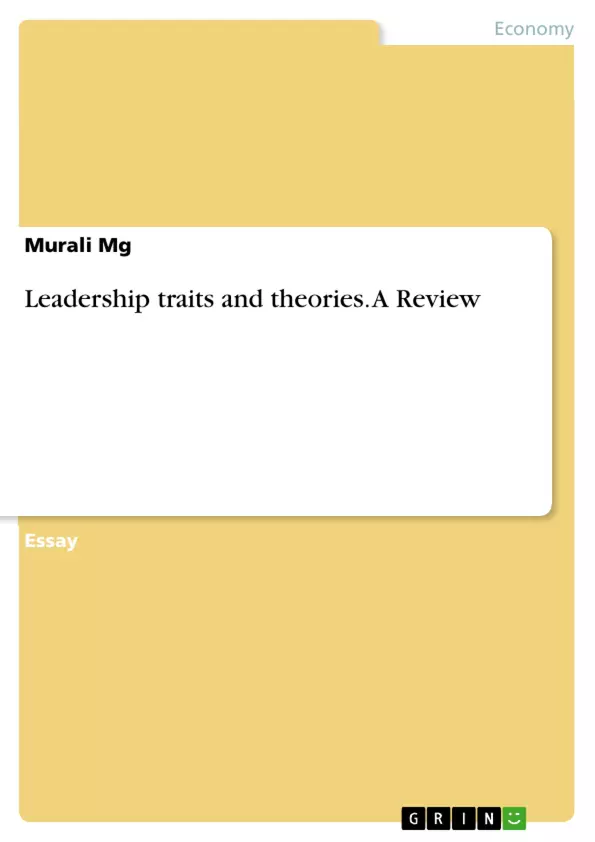In the field of business and management sciences leadership is one of the enticing topic that has been studies and debated over and over. Well, the definition itself has been researched for so long which is evident by number of leadership definitions and theories of leadership that are presented by numerous research scholars. One of the definition of leadership is to be attributed to (Bavelas, 1969) who defined leadership as process and leadership is a personal attribute.
This statements presents meaning that leadership is process of influencing, motivating or something more than that and such a skill is a personal attribute. According to (Bass, 1990), Leadership or a leader is the center of the group change and activity and embodies the will of the group. The author’s perspective on leadership was on the basis that leadership is about focus of group processes.
Table of Contents
- Introduction
- Theories of Leadership
- Trait theories of Leadership
- Contingency theory of Leadership
- Behavioral theory of Leadership
- Power and Influence theory of Leadership
- Leadership Styles
- Authoritarian style of leadership
- Participative Leadership style
- Laissez-Faire Leadership style
- Transformational Leadership style
- Traits of Leadership
Objectives and Key Themes
This text aims to provide a comprehensive overview of leadership, exploring its various definitions, theories, and styles. It delves into the historical evolution of leadership concepts and examines the influence of different situational factors on leadership effectiveness.
- Definitions and Theories of Leadership
- Impact of Situational Factors on Leadership
- Different Leadership Styles and their Effectiveness
- Key Traits of Successful Leaders
- Evolution of Leadership Concepts
Chapter Summaries
- Introduction: This chapter provides an introduction to the topic of leadership, exploring its definitions and importance in the field of business and management. It discusses various perspectives on leadership, highlighting the concept of leadership as a process of influence and goal attainment.
- Theories of Leadership: This chapter delves into various theories of leadership, beginning with the early Great Man theory and its limitations. It explores the development of trait theories, examining the idea that leaders are born with innate qualities that differentiate them from others. The chapter also introduces contingency theories, which emphasize the importance of situational factors in determining leadership effectiveness.
- Trait theories of Leadership: This chapter focuses on the trait theory of leadership, examining the idea that individuals possess certain innate characteristics that make them effective leaders. It discusses various traits associated with successful leadership, including physical vitality, intelligence, and task competence.
- Contingency theory of Leadership: This chapter explores contingency theories of leadership, which emphasize the importance of situational factors in determining leadership effectiveness. It examines Fielder's contingency theory, which identifies the relationship between a leader's orientation style and the performance of a group under different situational conditions.
Keywords
The main keywords and focus topics of this text include leadership, leadership theories, trait theories, contingency theory, leadership styles, situational factors, leadership effectiveness, and traits of successful leaders. The text examines the historical development of leadership concepts, explores different theoretical perspectives, and analyzes the impact of situational factors on leadership.
- Quote paper
- Murali Mg (Author), 2015, Leadership traits and theories. A Review, Munich, GRIN Verlag, https://www.grin.com/document/311026



